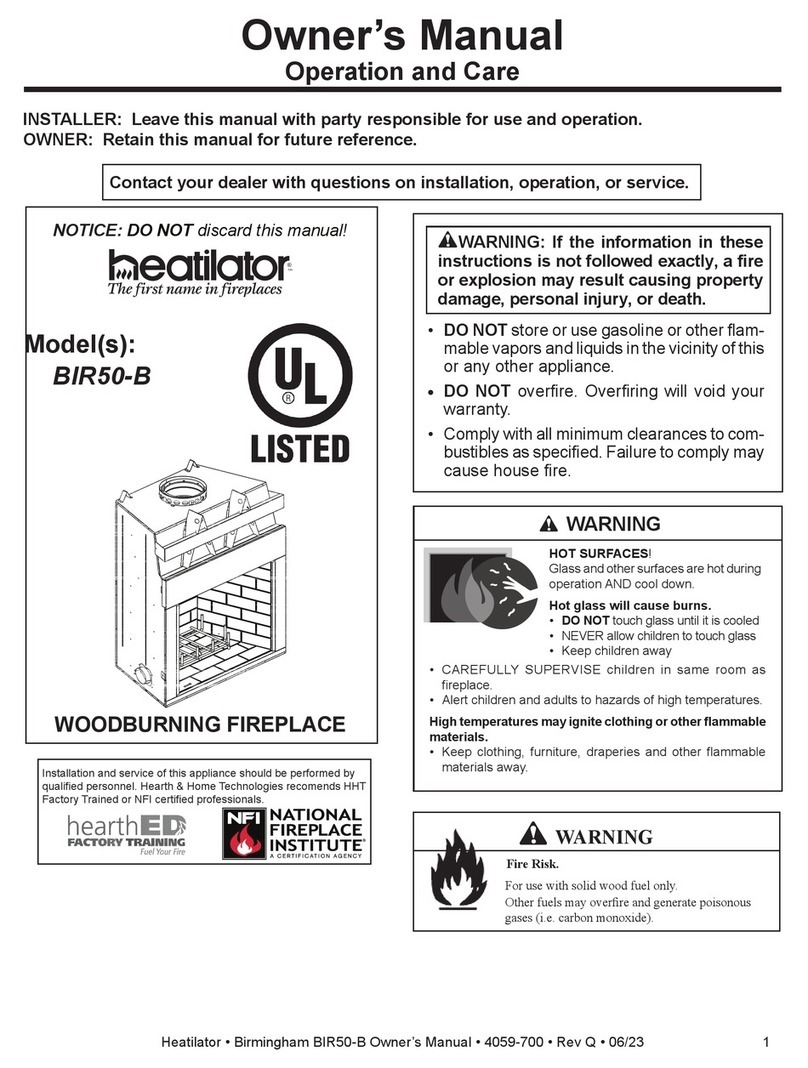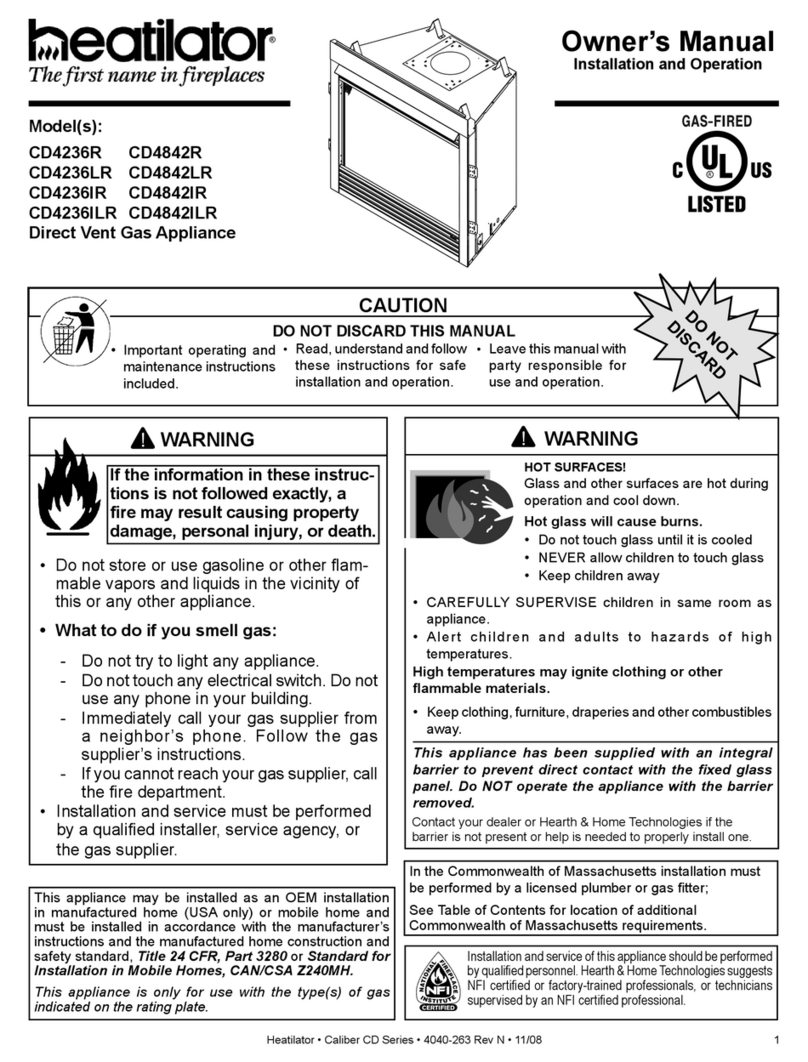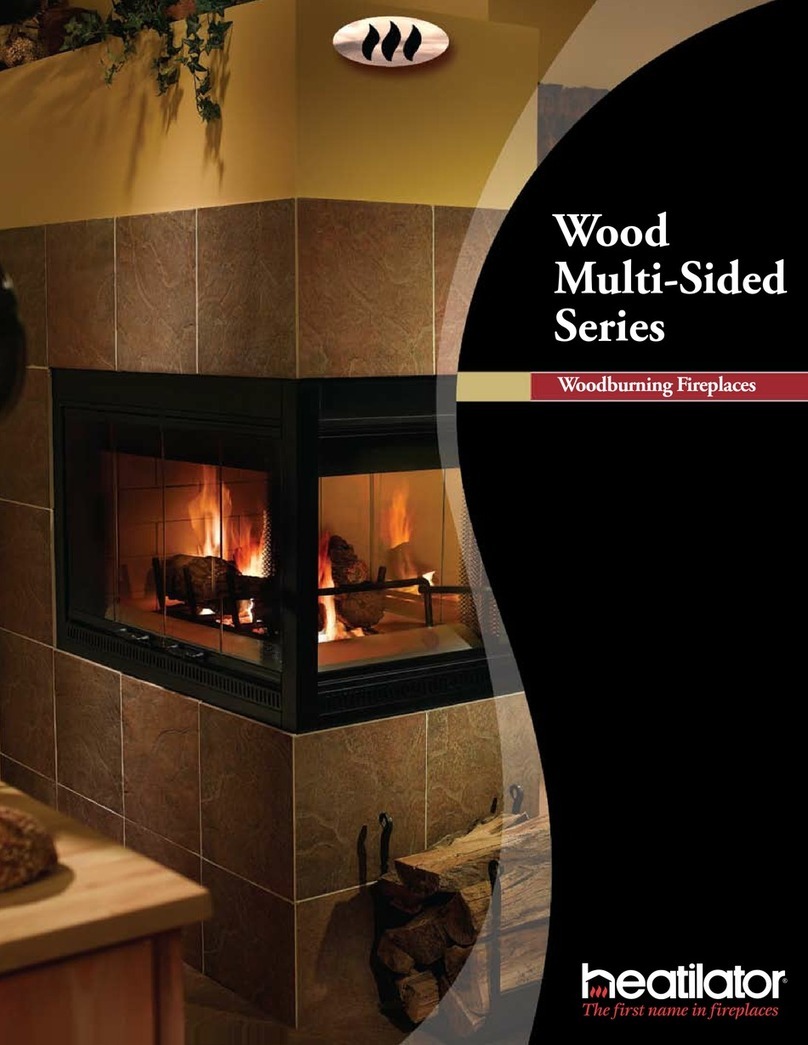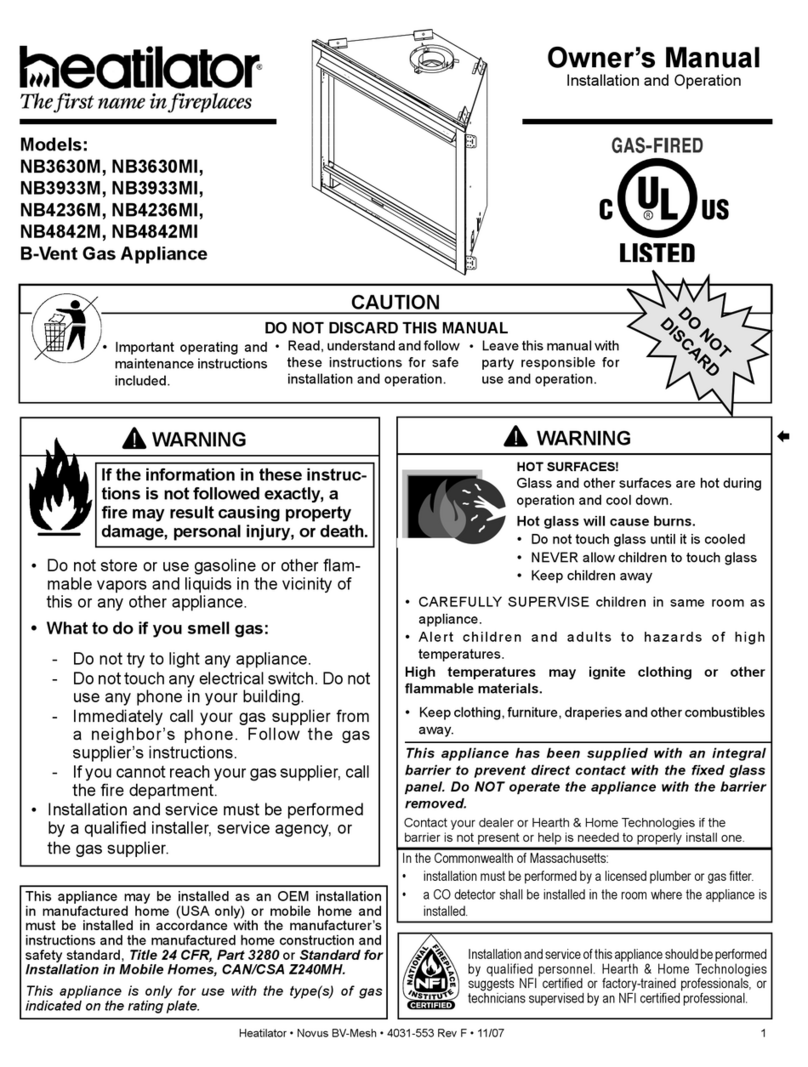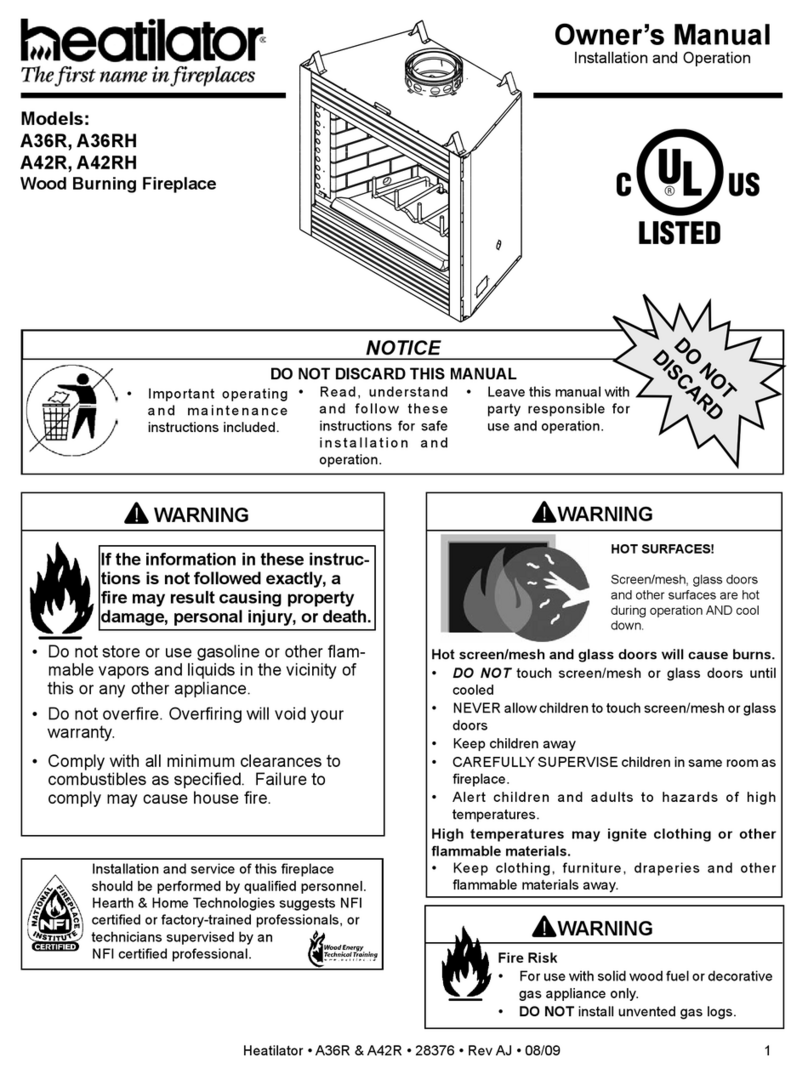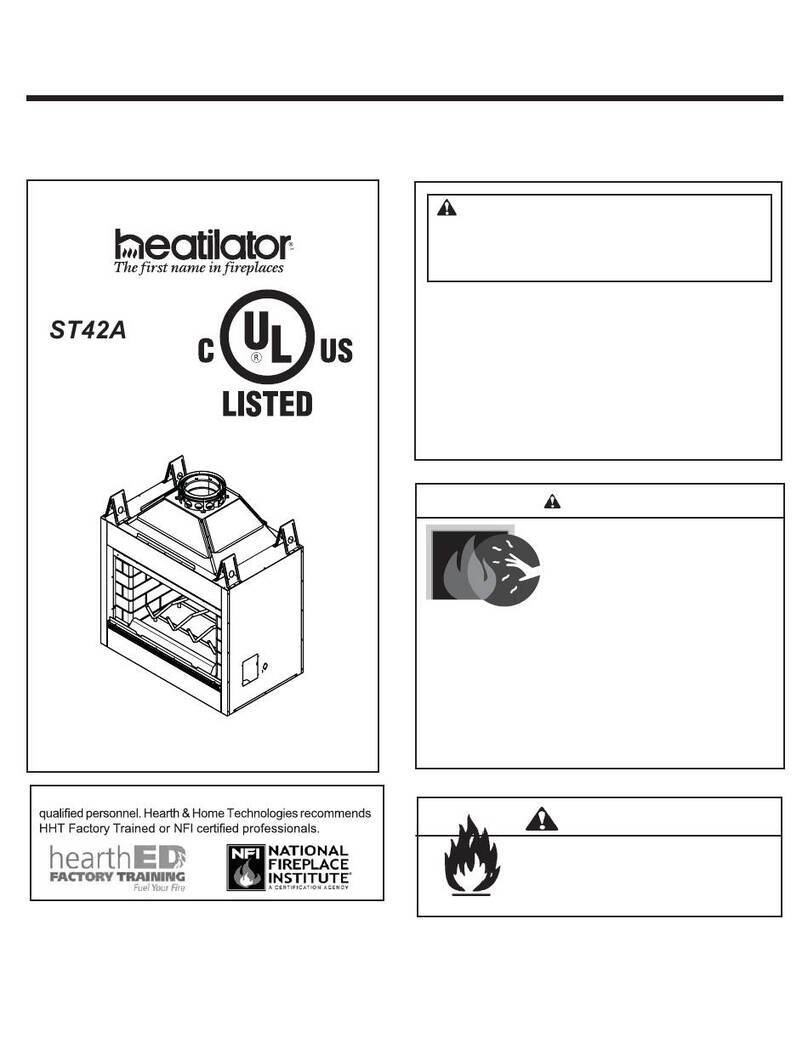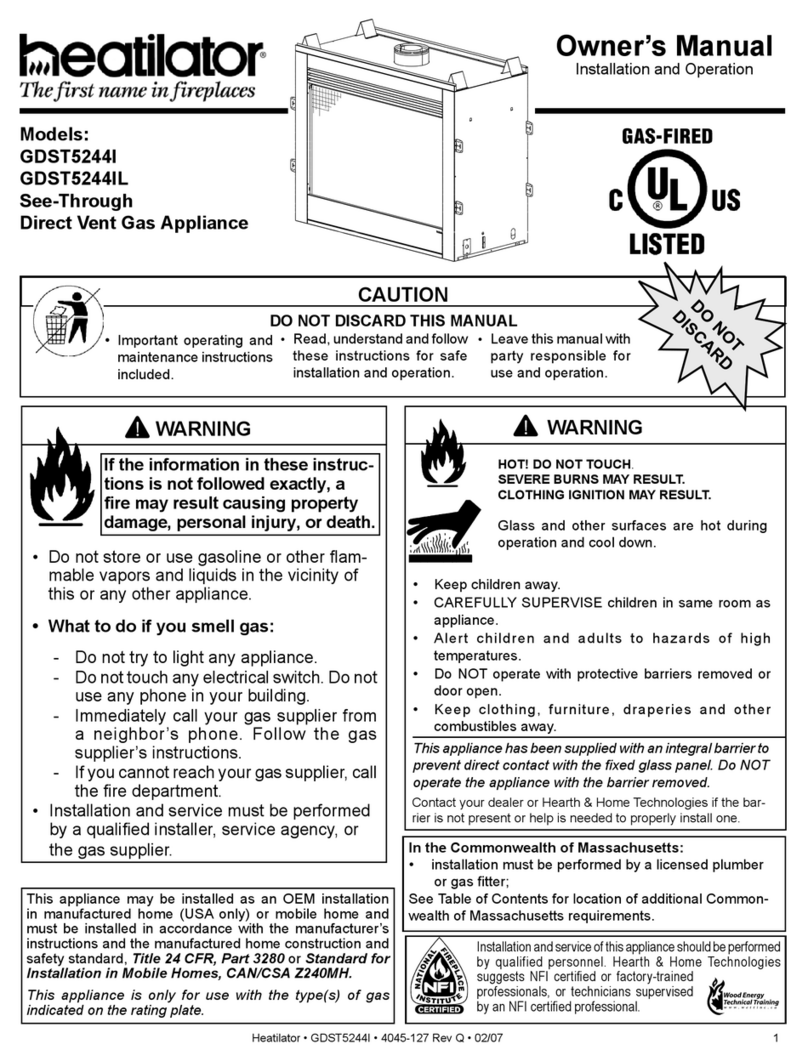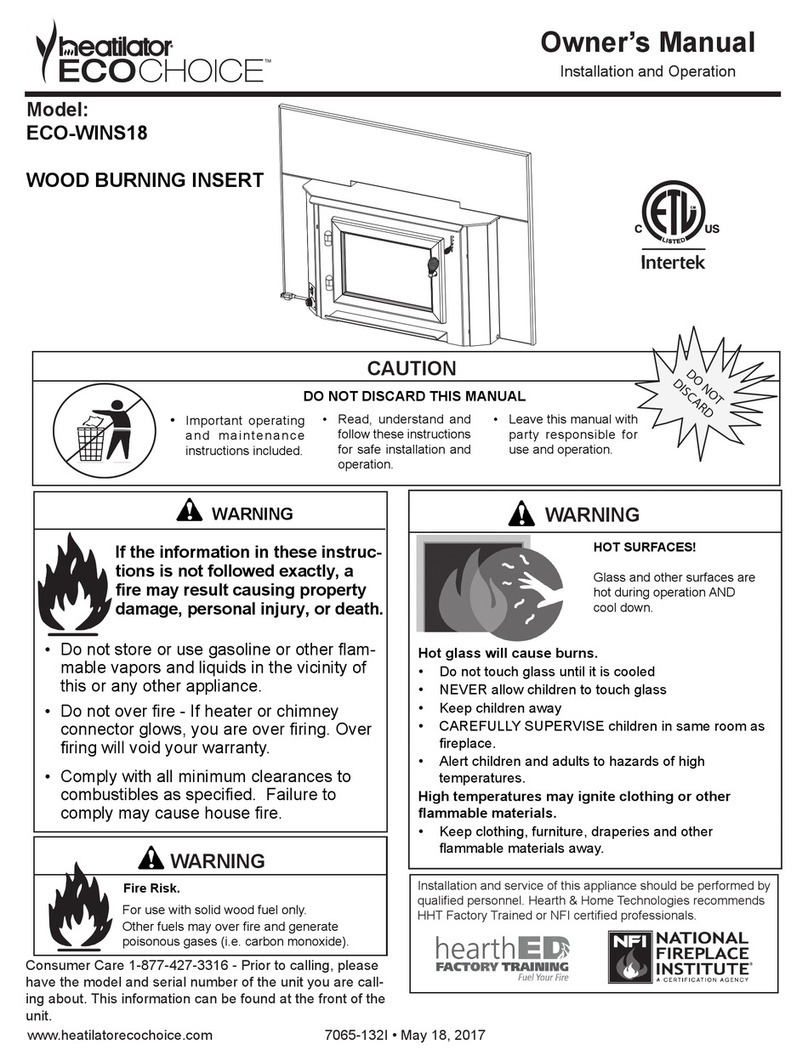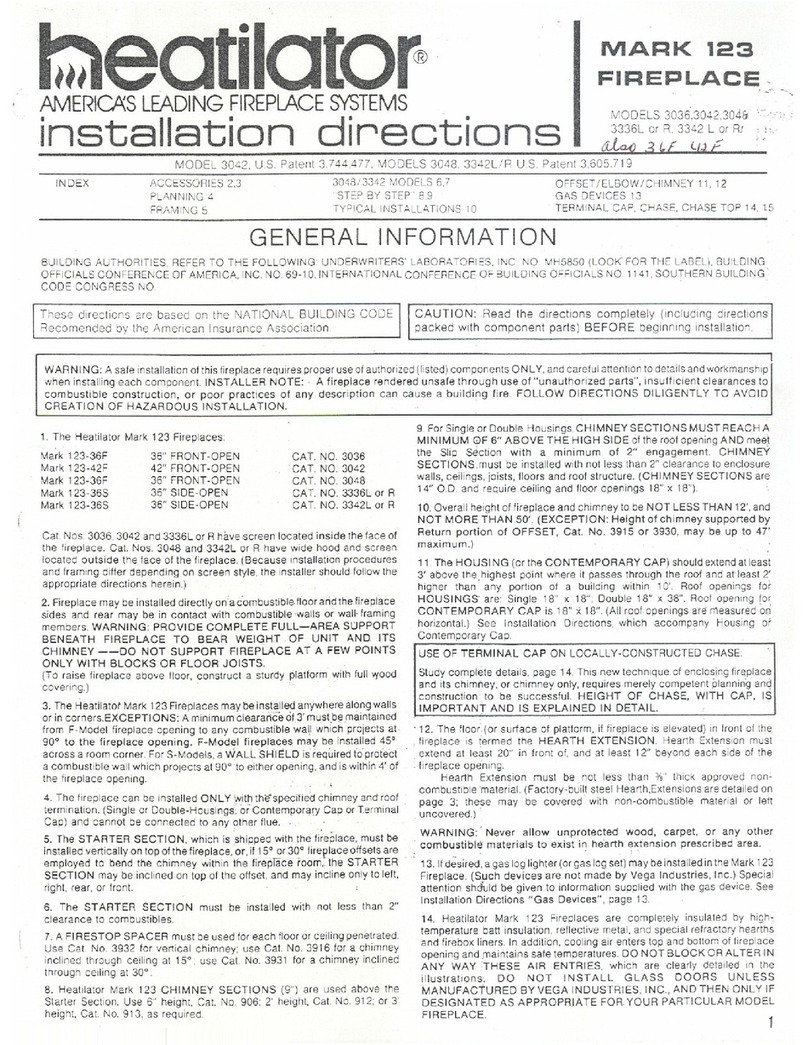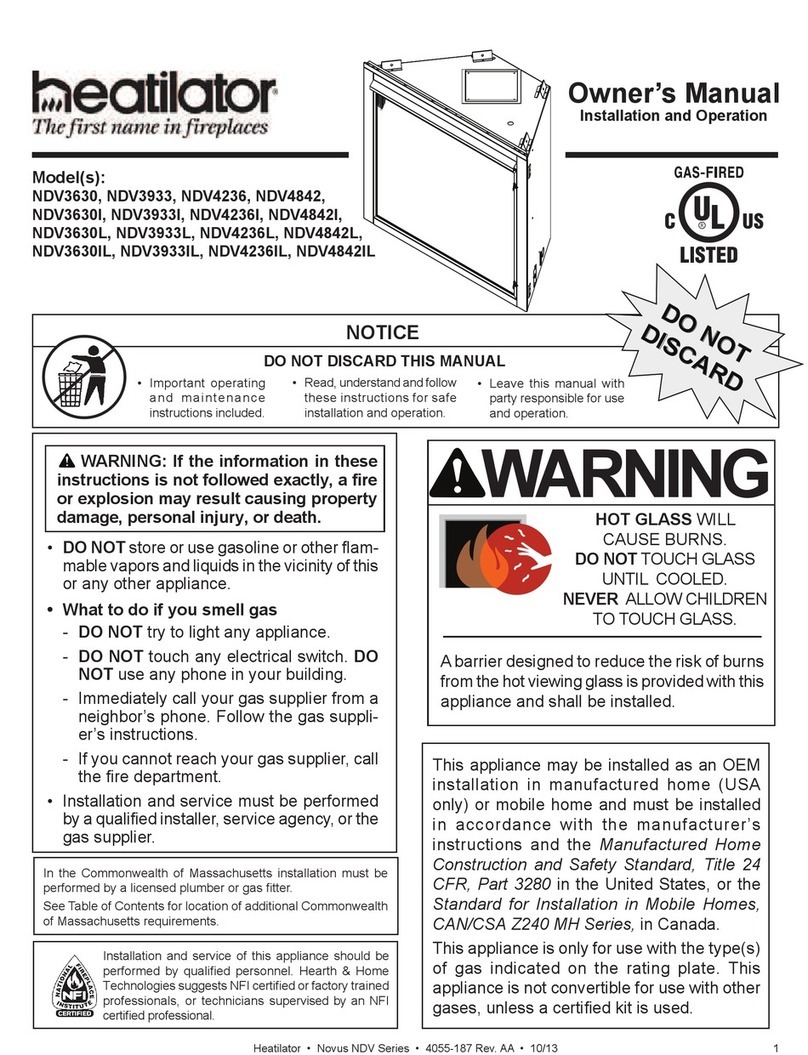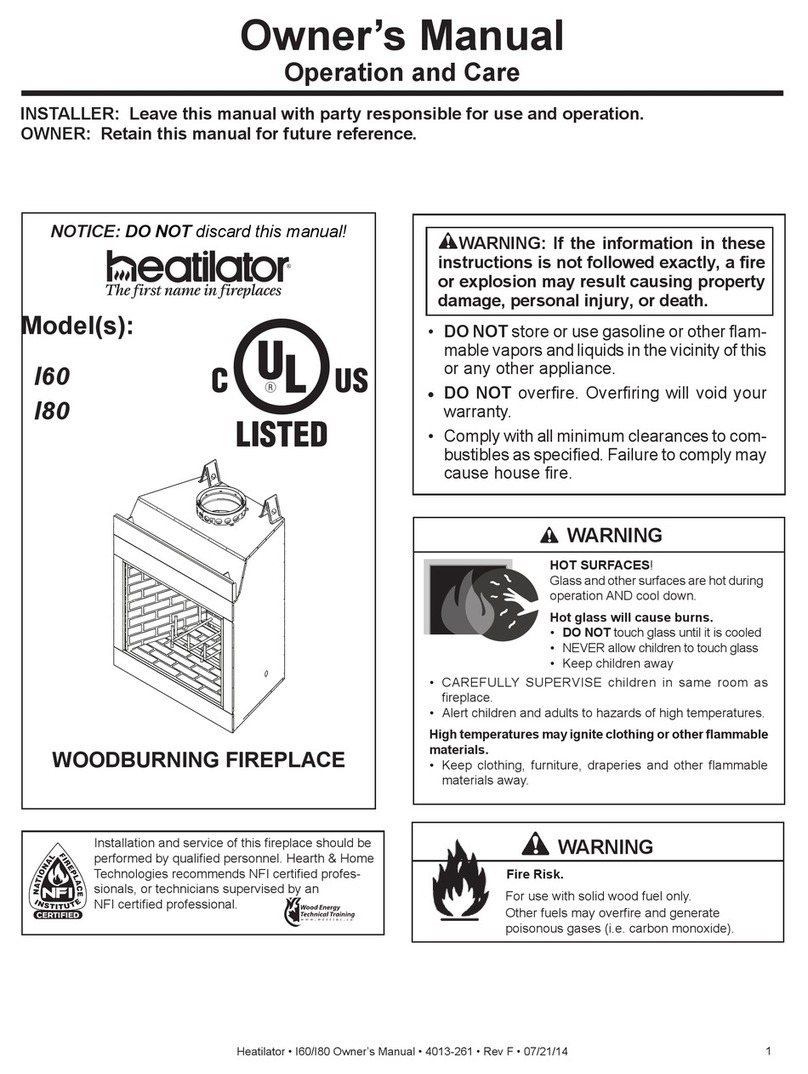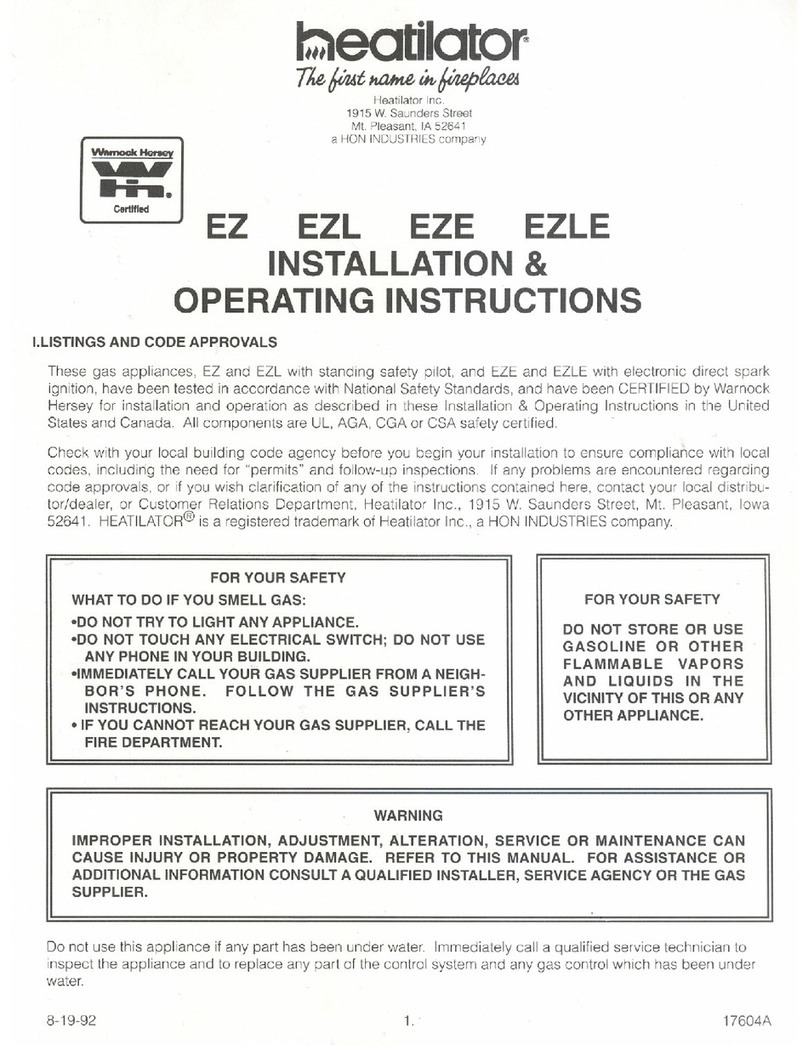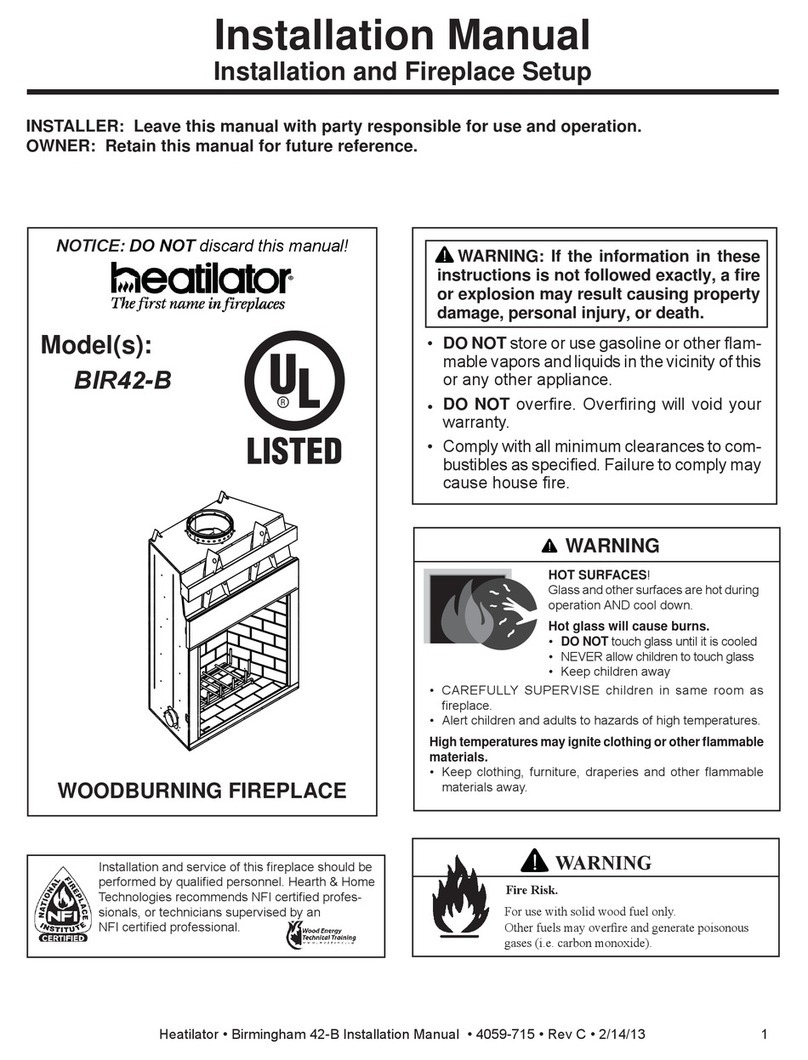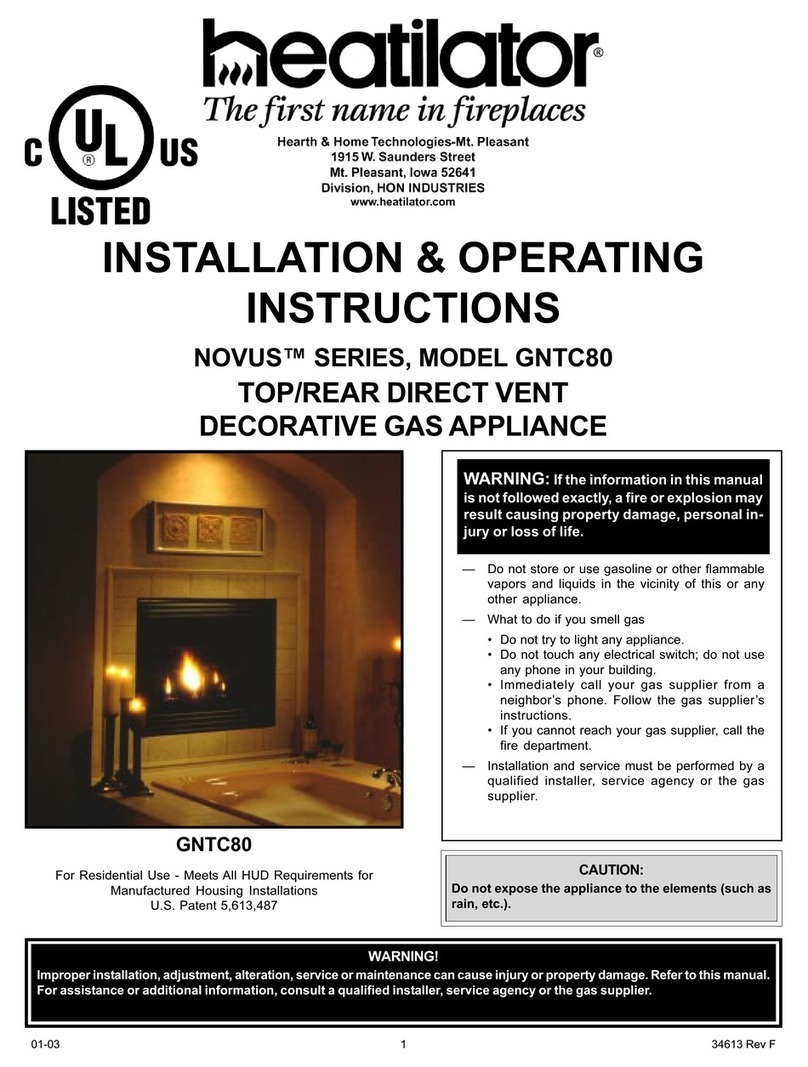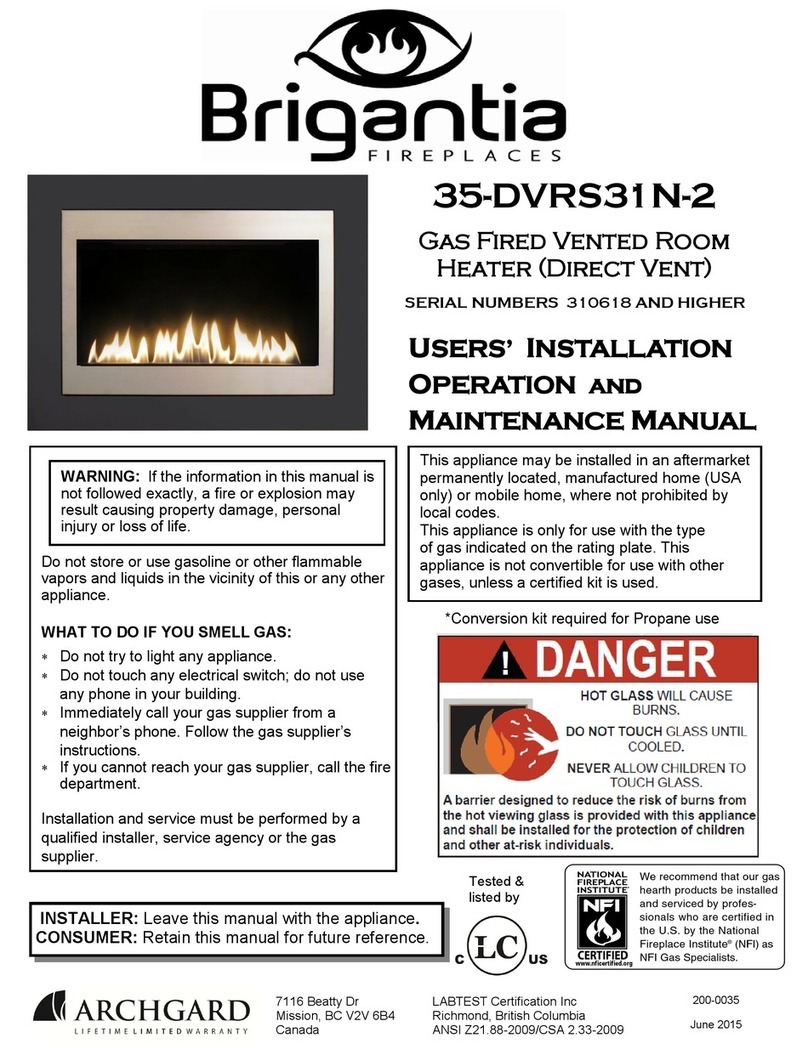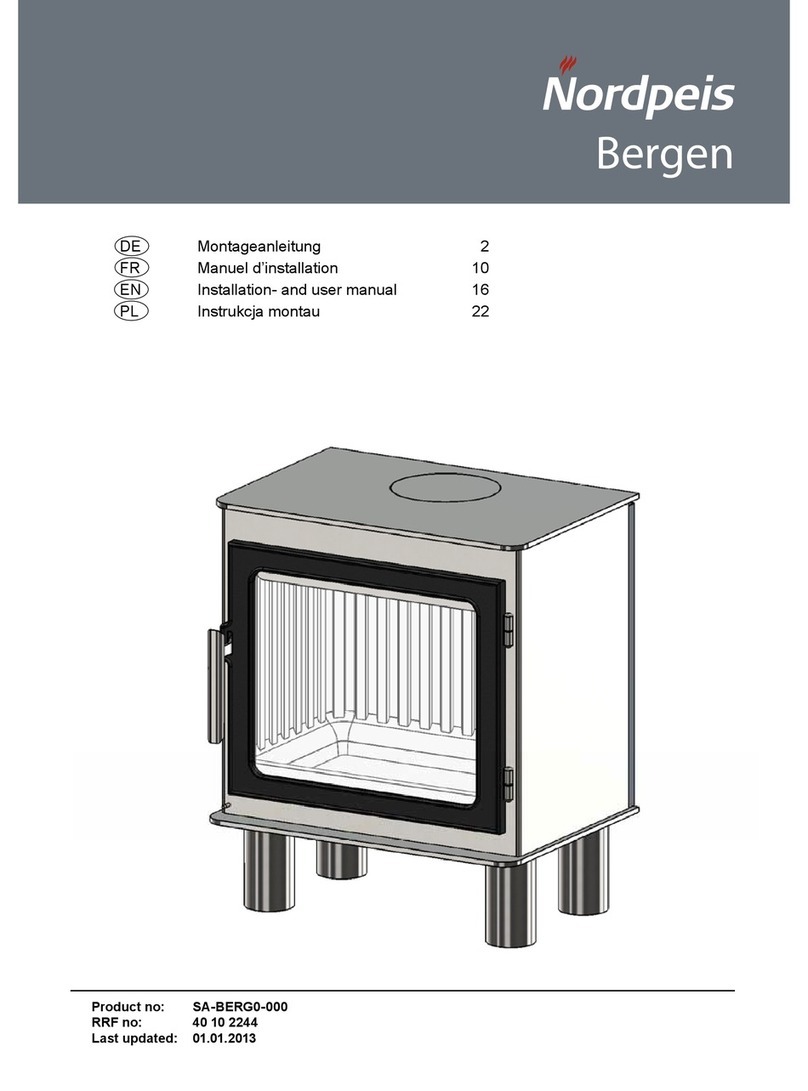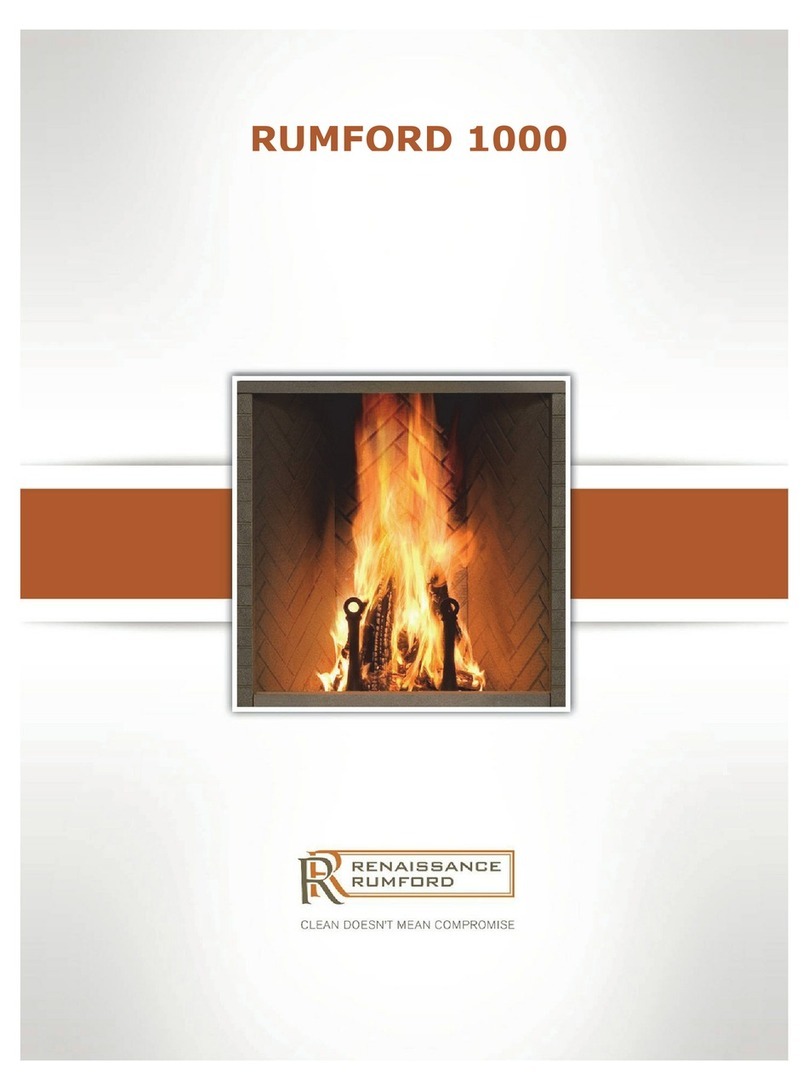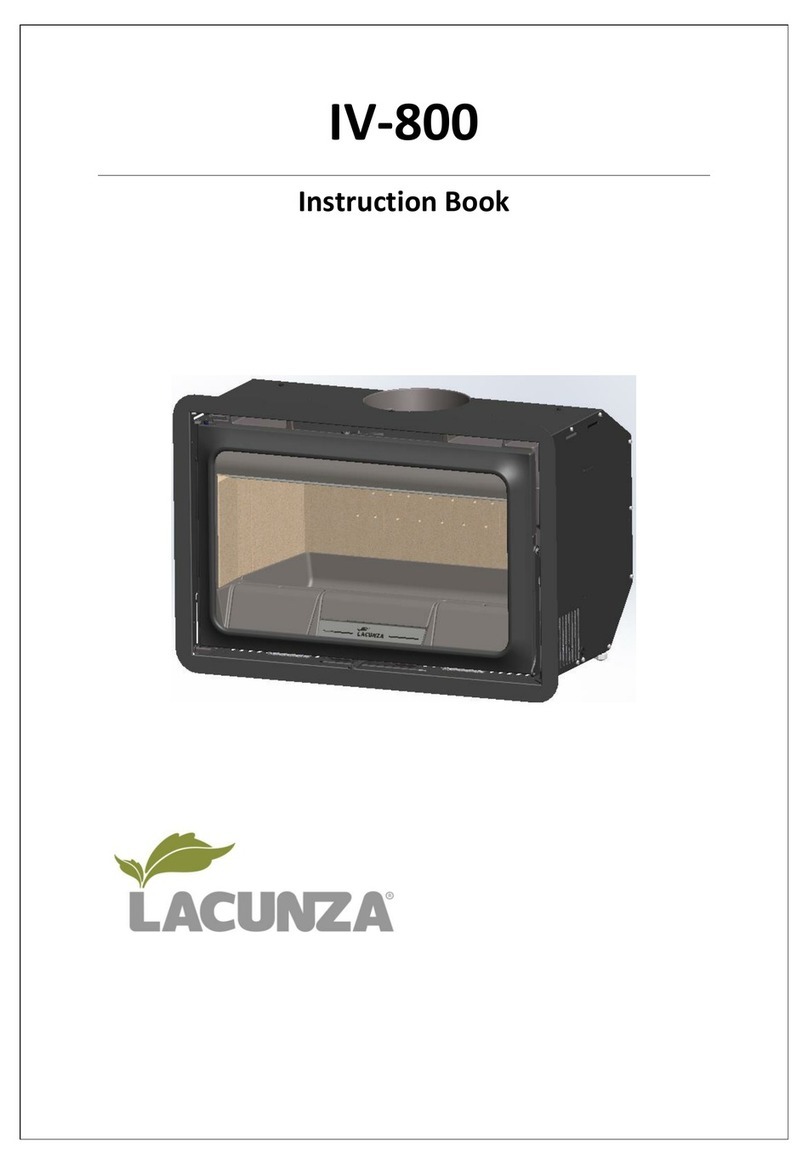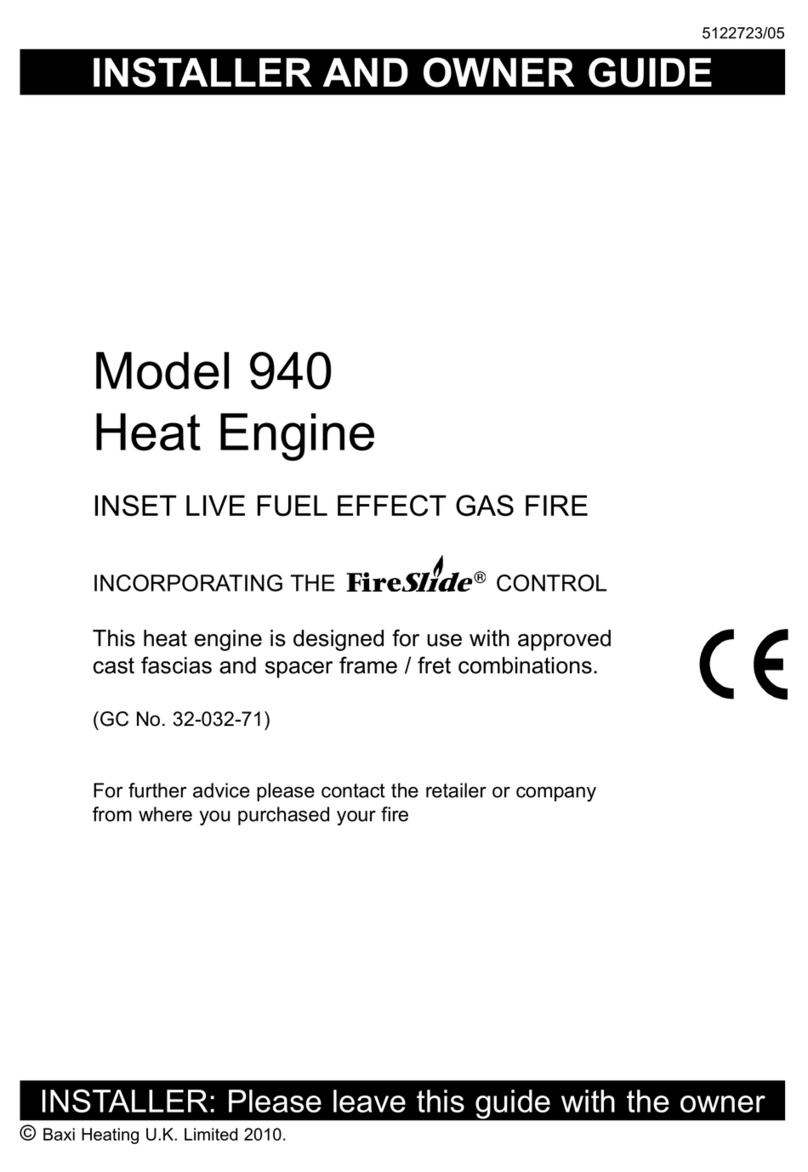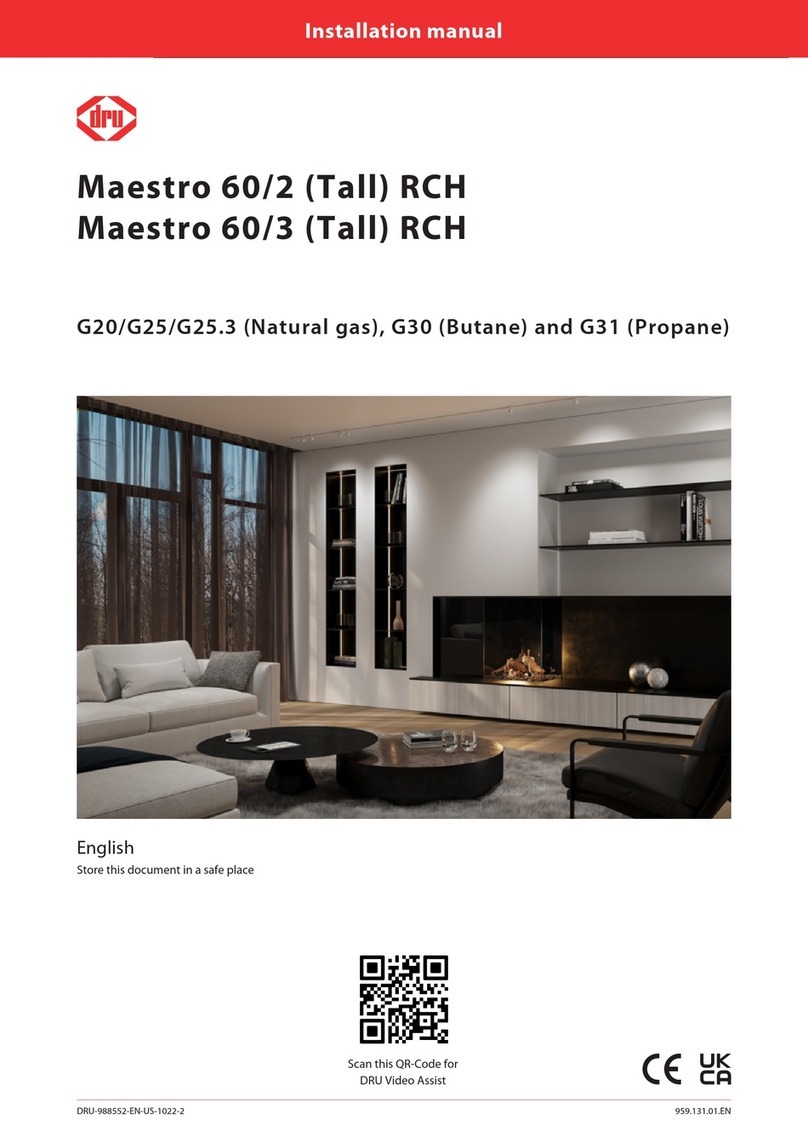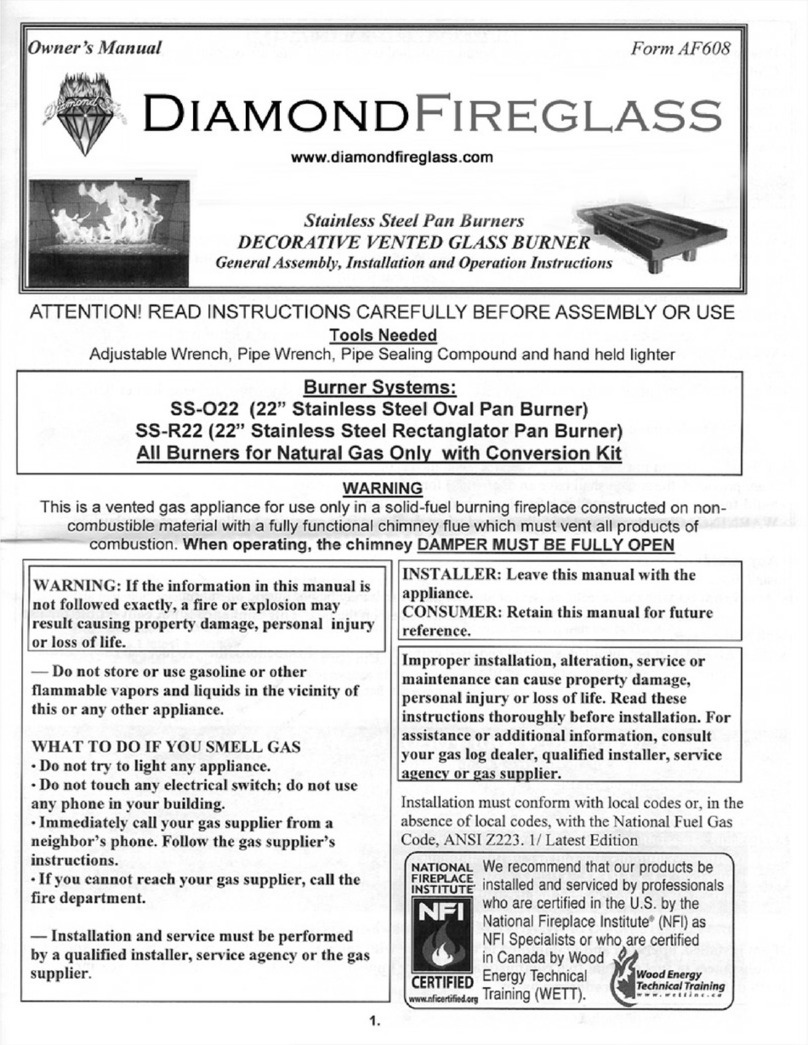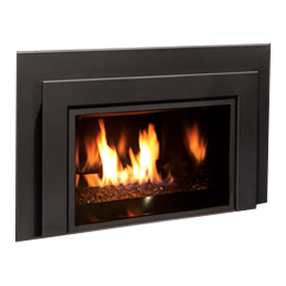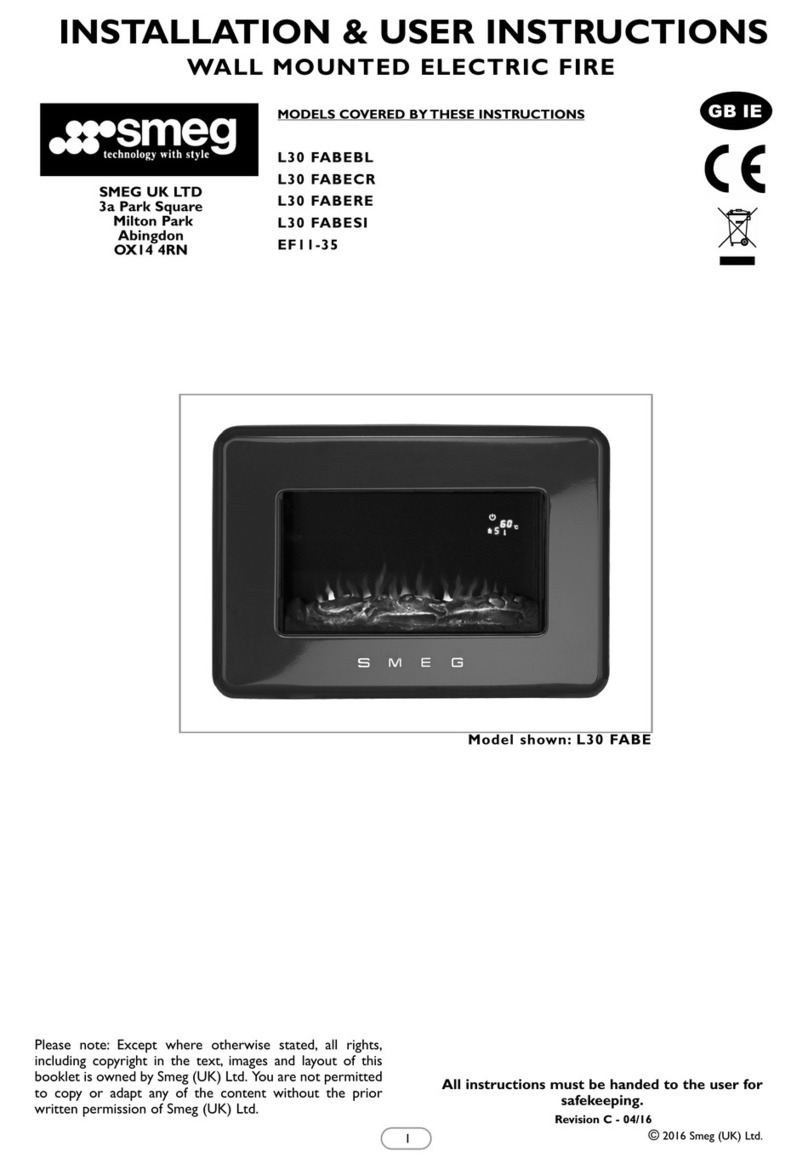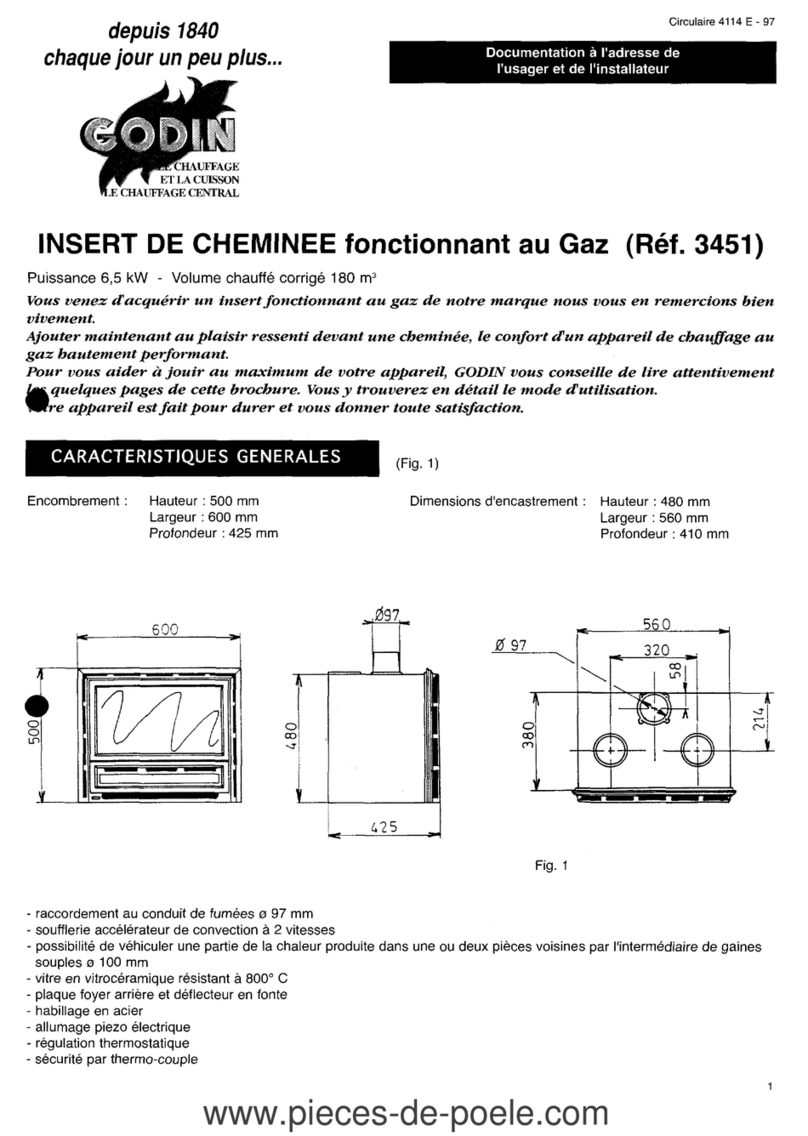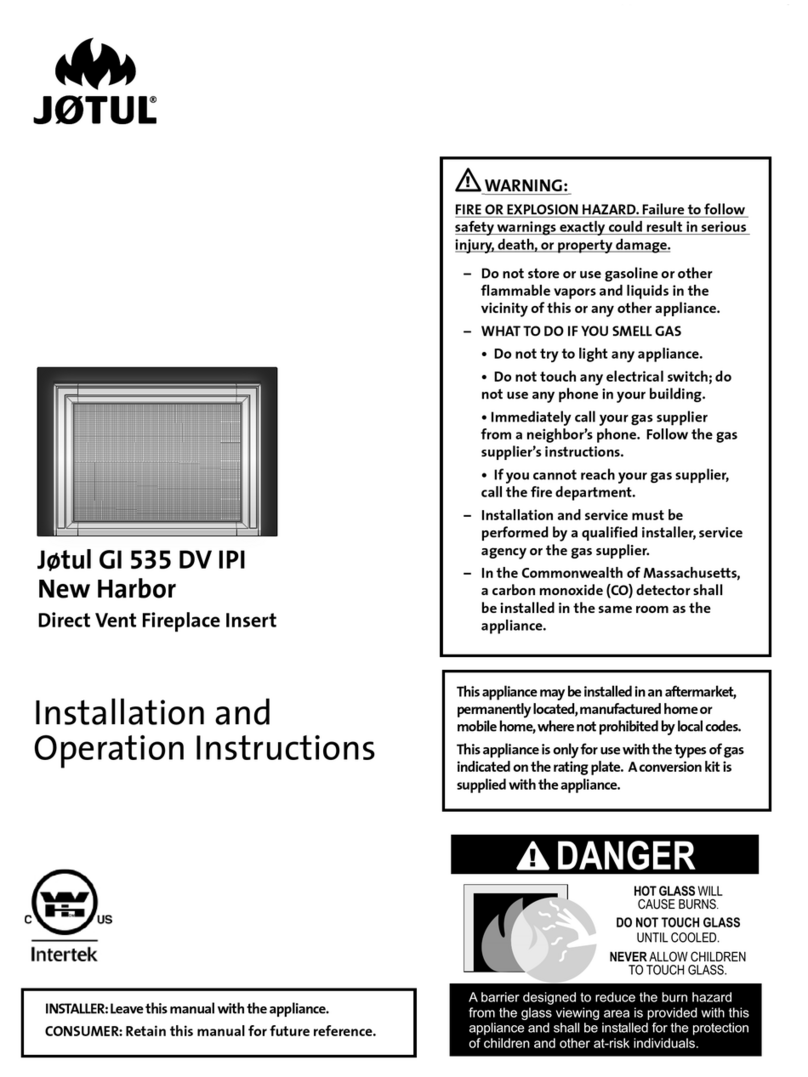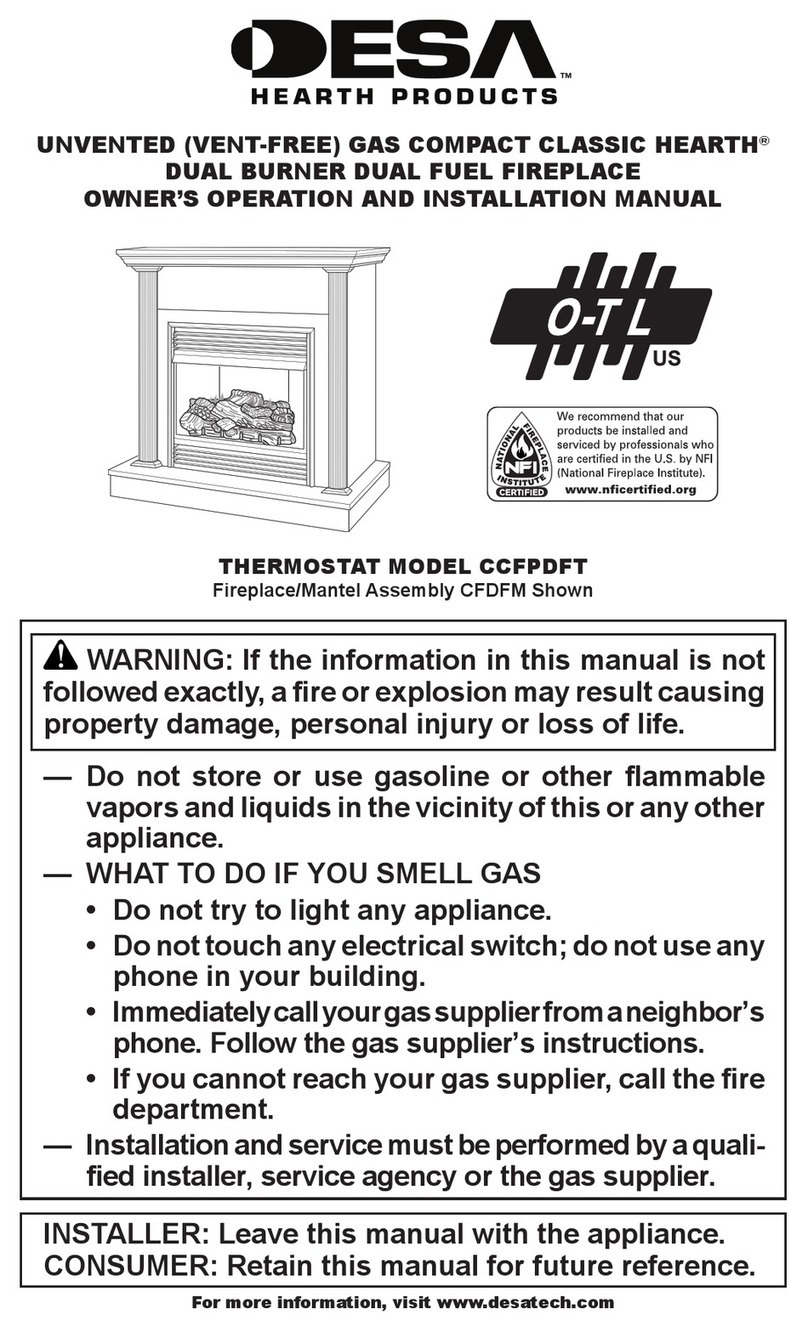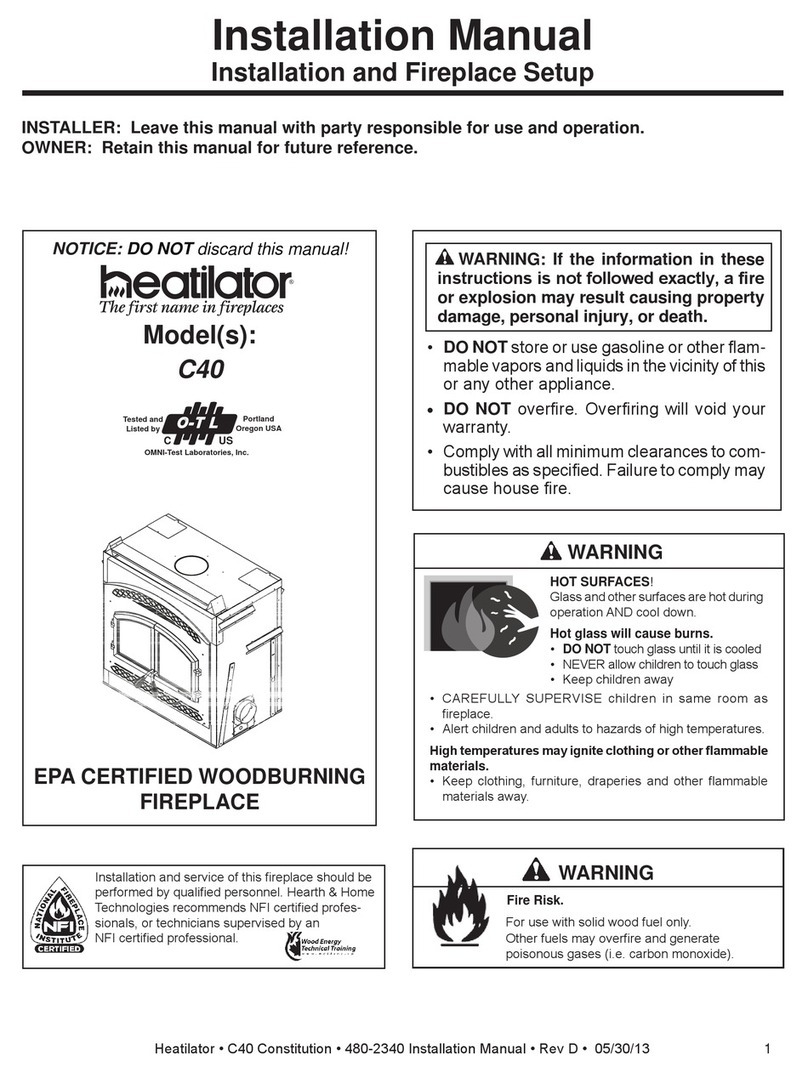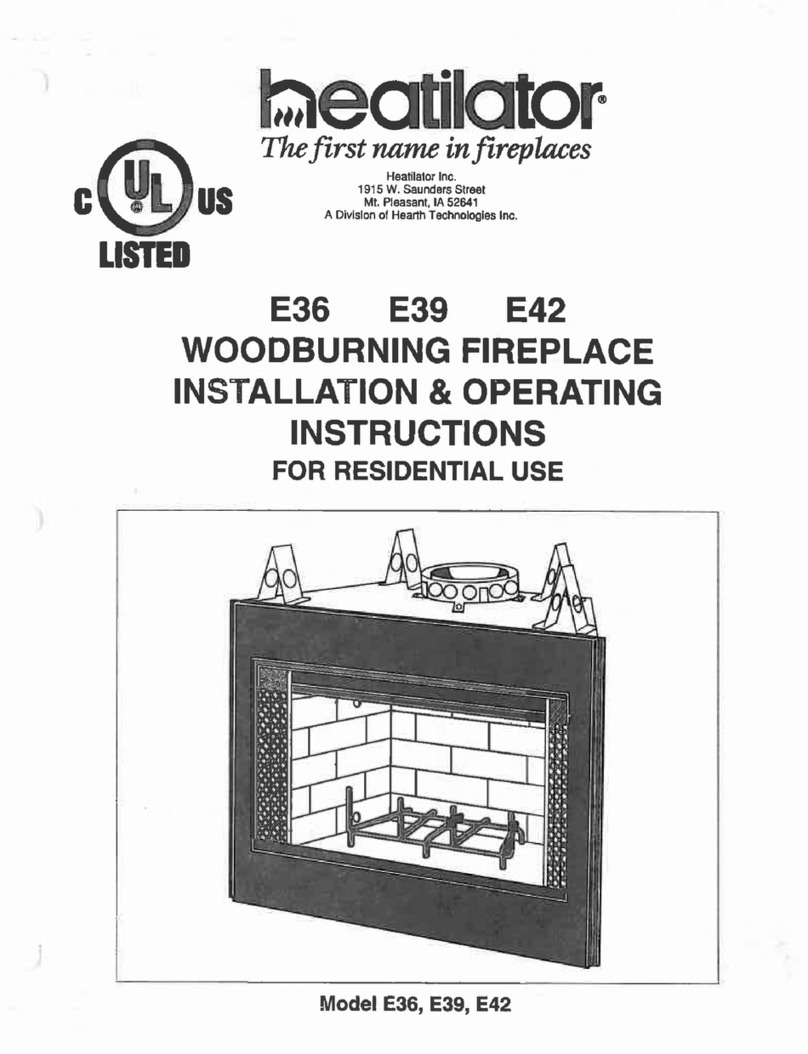
34615 Rev G 2 12-02
NOVUS B-VENT INSTALLATION INSTRUCTIONS
WARNING!
D N T use this appliance if any part has been under water. Immediately call a qualified service technician to
inspect the appliance and to replace any part of the control system and any gas control which has been under
water.
1. Please read these installation instructions
completely before beginning installation
procedures. Failure to follow them could cause an
appliance malfunction resulting in serious injury
and/or property damage.
2. Always check your local building codes prior to
installation. This installation must comply with all
local, regional, state and national codes and
regulations.
3. Installation and repair should be done by a qualified
service person. This appliance should also be
inspected annually by a qualified service person.
More frequent inspections/cleaning may be
required due to excessive lint from carpeting,
bedding materials, etc. It is imperative that the
control compartment, burners and circulating air
passageways of the appliance be kept clean.
4. This is a vented decorative gas appliance. Do not
burn wood or other material in this appliance.
5. NEVER leave children unattended when there is a
fire burning in the appliance.
6. This appliance may only use the approved venting
systems shown in these installation instructions.
Venting must not be connected to chimney flue
servicing a solid fuel burning appliance or a gas
fuel burning appliance.
7. NEVER use gasoline, gasoline-type lantern fuel,
kerosene, charcoal lighter fluid, or similar liquids
in this appliance. Keep any flammable liquids a safe
distance from the appliance.
8. While servicing this appliance, always shut off all
electricity and gas to the appliance. This will
prevent possible electrical shock or burns. Also,
make sure the appliance is completely cooled
before servicing.
9. Do not use this appliance if any part has been under
water. Immediately call a qualified service
technician to inspect the appliance and to replace
any part of the control system and any gas control
which has been under water.
10. Be sure to provide adequate clearances around the
air openings into the combustion chamber and
adequate accessibility clearances for servicing and
proper operation.
SAFETY PRECAUTIONS
TABLE OF CONTENTS
Design and Installation Considerations for B-Vents ...................................................................................................... 3
A. Applicance Specifications ............................................................................................................................................ 4
B. Location and Clearances .............................................................................................................................................. 5
C. raming ......................................................................................................................................................................... 6
D. Setting the Appliance .................................................................................................................................................... 7
E. Venting ........................................................................................................................................................................... 7
. Utilities .......................................................................................................................................................................... 11
G. inishing ...................................................................................................................................................................... 14
H. Appliance Preparation ................................................................................................................................................ 14
I. Determining the Ignition Type ..................................................................................................................................... 15
J. Lighting Instructions .................................................................................................................................................... 16
K. Seasonal Checklist ...................................................................................................................................................... 18
L. Start-up Issues ............................................................................................................................................................ 19
M. Maintenance Instructions ............................................................................................................................................ 20
N. Optional Components ................................................................................................................................................. 22
O. Replacement Parts ...................................................................................................................................................... 25
Index ............................................................................................................................................................................ 27
Warranty ...................................................................................................................................................................... 28

